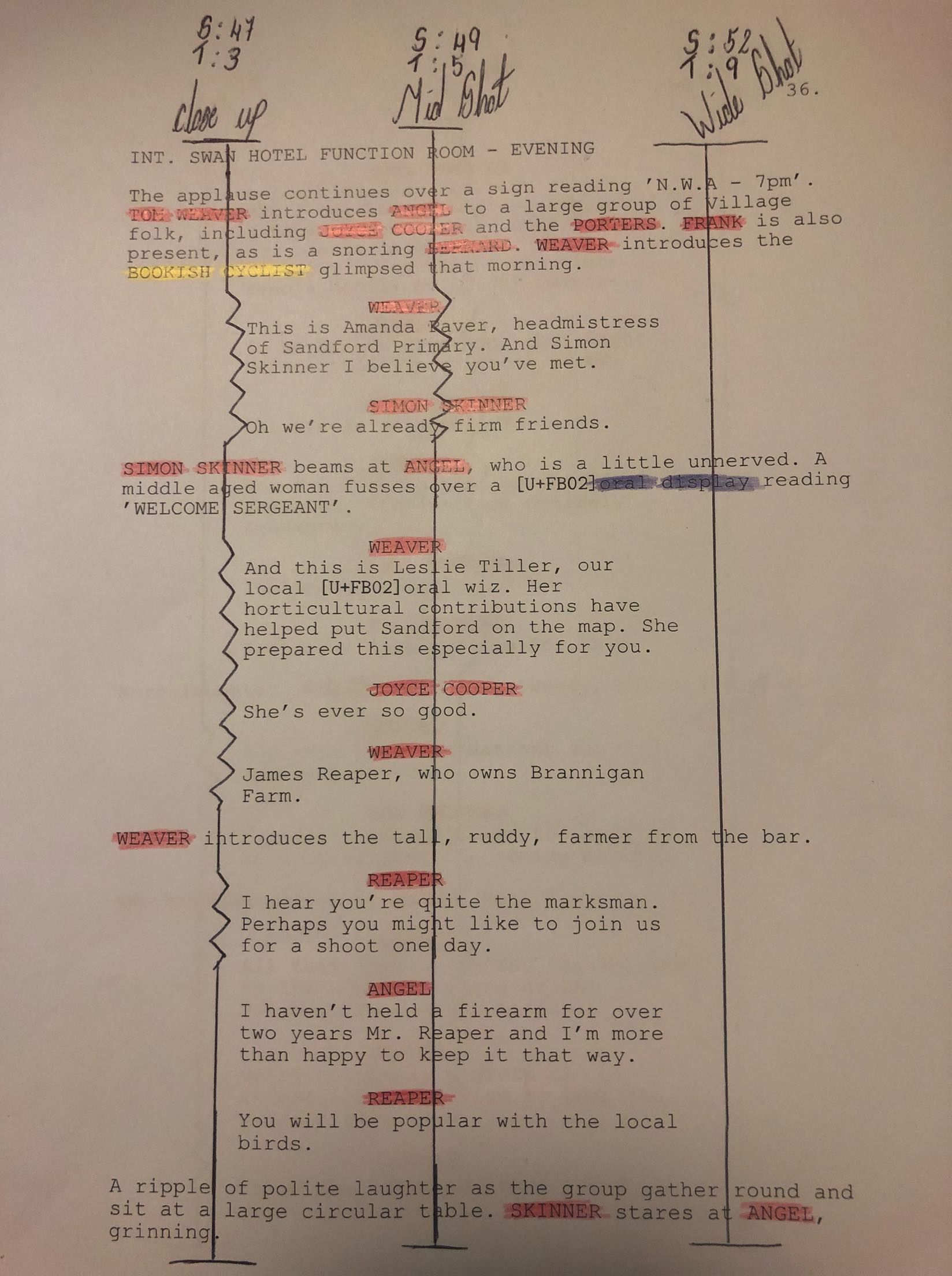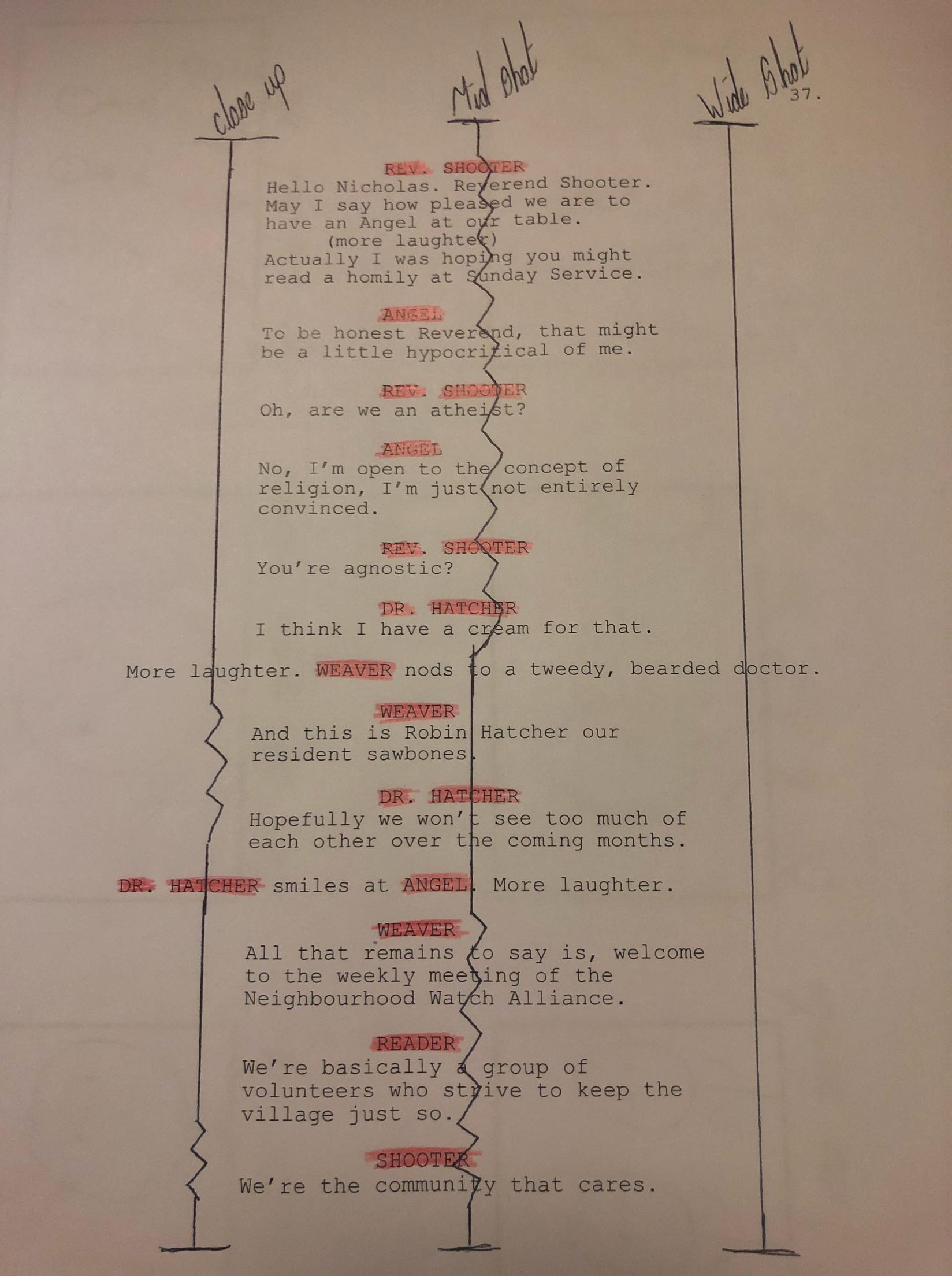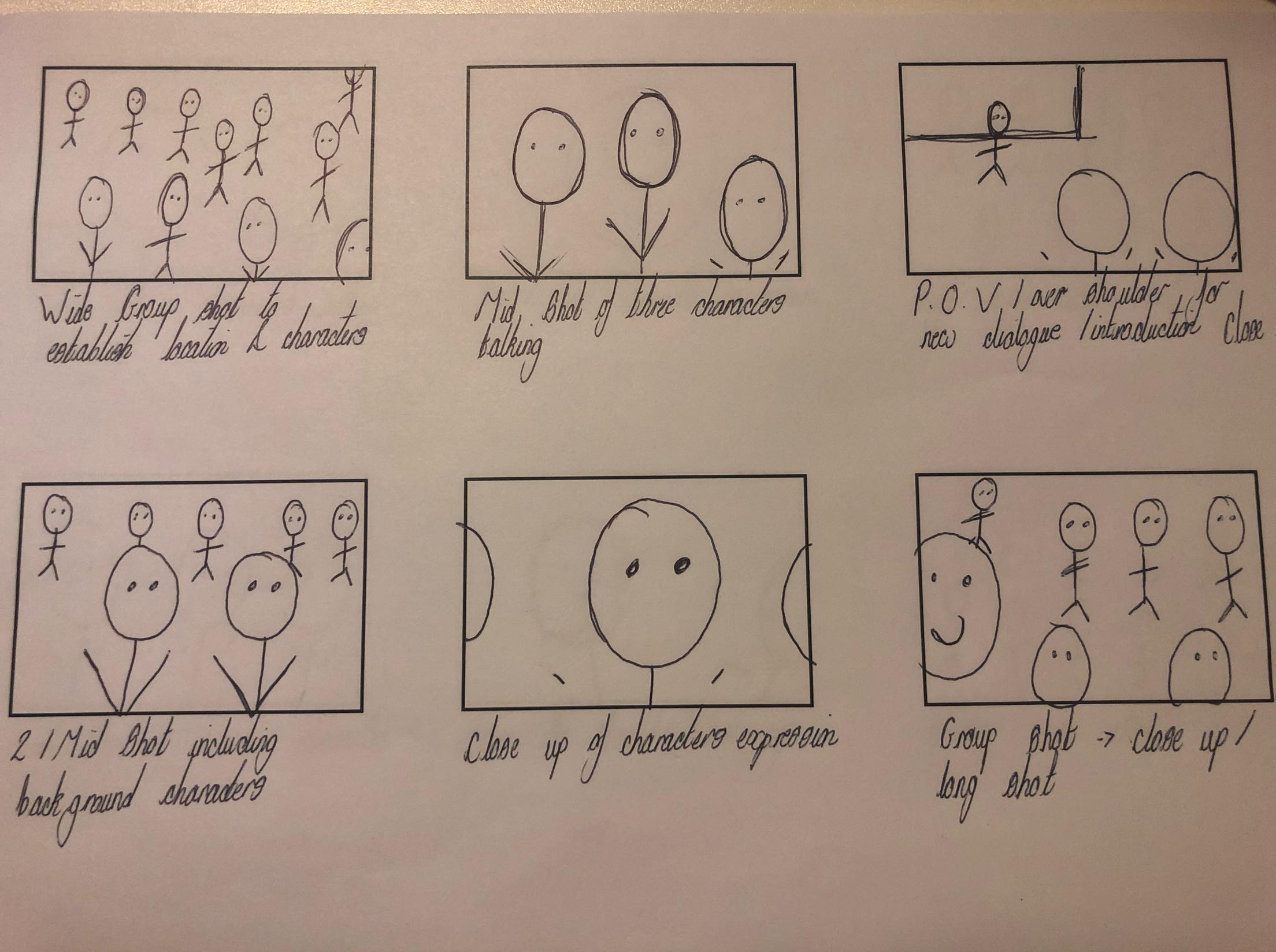Copy of Script Breakdown Sheets Template Workbook (Recovered) – Legend
Copy of Script Breakdown Sheets Template Workbook (Recovered) – Breakdown Sheet
Copy of Script Breakdown Sheets Template Workbook (Recovered) – Cast List
This task asked us to individually produce a storyboard, breakdown sheets ad an annotated shooting with shot ‘tramlines’ of an existing script. For this, I chose a scene from the film ‘Hot Fuzz’ (appendix 4), where Nicholas Angel is being introduced to the group of the neighbourhood watch. This task familiarises us with the role of the 1st AD on set and the importance of their role.
The first part of this task focused on creating our own shots for the scene we had chosen. This involved creating a simple storyboard, that consisted of 12 separate shots, that would outline the shot types we had decided on.”Selecting a frame is the fundamental act of filmmaking; as filmmakers, we must direct the audience’s attention” (Cinematography theory & practice, Blain Brown, 2016). In doing this, it would determine how many tramlines we would have on the script and what each camera would screen as their shot. I decided on using a close up, mid shot and a wide shot on 3 individual cameras, using these shots to show which characters would be speaking and in shot at what time.
The scene within the ‘Hot Fuzz’ script that I chose involved mostly dialogue between a range of characters that enter in and out of shot. This made it easier to create my tramlines however made it extremely difficult when using the breakdown colour legend. This breakdown task includes highlighting the specifics within the script such as characters, props, stunts and wardrobe. Unfortunately, the main feature I was able to highlight was the cast and only one prop and one extra silent. This became a weakness in my breakdown due to not having enough action within the script where detail can be explained.
If I was to create this task again, I would spend more time studying script options and which scene I want to use in order to breakdown. An ideal script would be one with an equal balance of dialogue and action in between characters. This would create equal tramlines and a balanced mixture of breakdown colour legend and a more successful breakdown of a script.
We also had to complete a breakdown sheet of the task, outlining the details of the script and the scene chosen which would explain the location, scene name and scene number. This sheet outlined what had been highlighted in the script, in a grid version. As well as this, a full cast list had to be created of the cast members within the chosen scene with the actor’s real name and character name together.
The strengths of this task came from the simplicity of the script when creating the tramlines and creating a range of camera shots when devising my storyboard. However, the weaknesses for this task came from a difficulty in understanding the task in general. I found it difficult to understand when the tramlines would need to be a straight or a zig zag line and over which part of the script then lines needed to be. As well as this, I struggled knowing which words needed to be highlighted. Due to also knowing the script, I found it difficult not to copy the original shots from the film as “choosing the frame is a matter of conveying a story” (Cinematography theory & practice, Blain Brown, 2016) which has already been produced and imagine creating this production myself by creating my own shot list options. I tried to steer as far away from the original production as possible and create a new storyboard with original shots from scratch.




